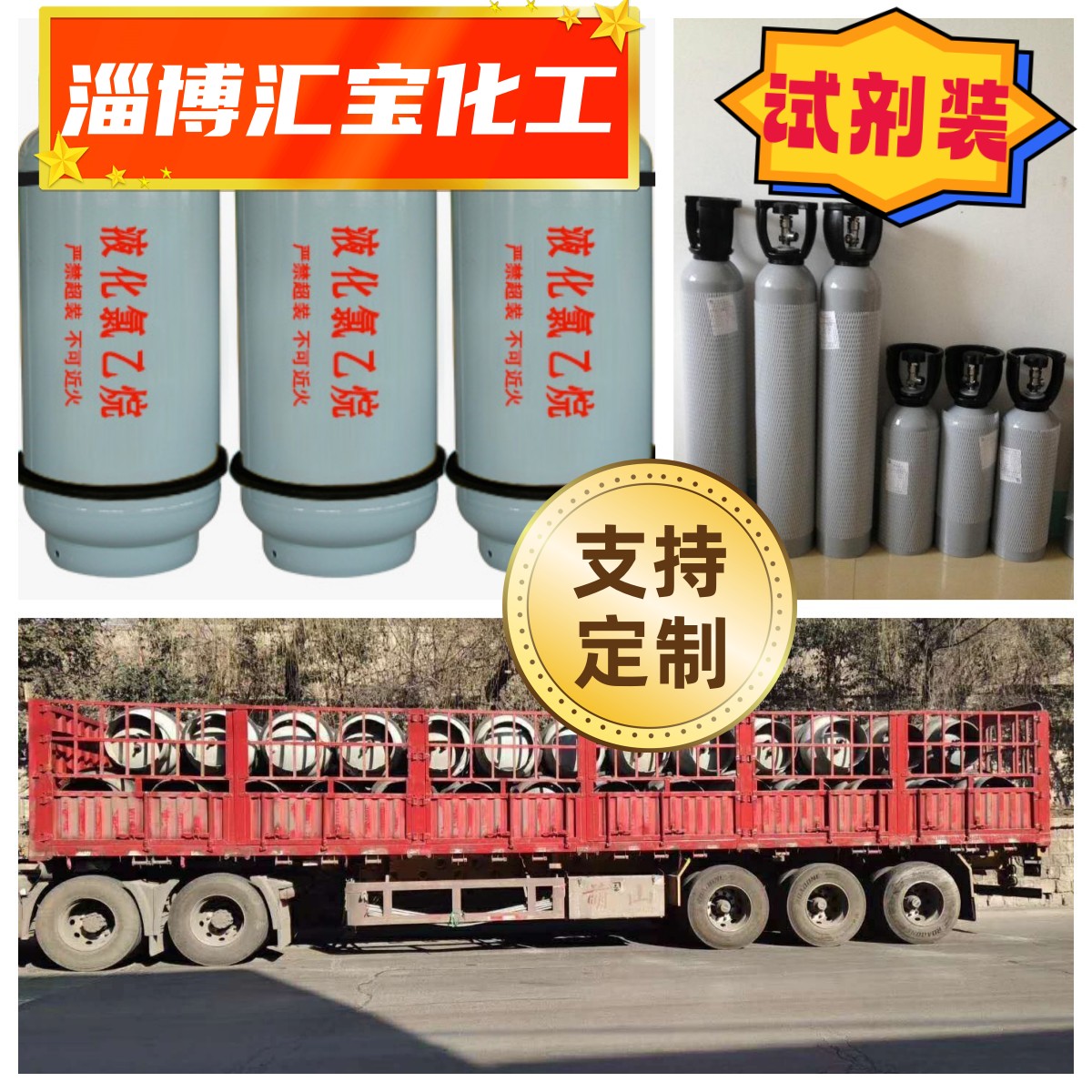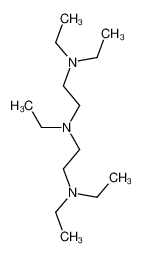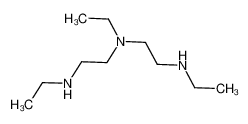| Product name | chloroethane |
|---|
| Product number | - |
|---|---|
| Other names | ethyl cerotate |
| Identified uses | For industry use only. Volatile organic compounds |
|---|---|
| Uses advised against | no data available |
| Company | MOLBASE (Shanghai) Biotechnology Co., Ltd. |
|---|---|
| Address | Floor 4 & 5, Building 12, No. 1001 North Qinzhou Road, Xuhui District, Shanghai, China |
| Telephone | +86(21)64956998 |
| Fax | +86(21)54365166 |
| Emergency phone number | +86-400-6021-666 |
|---|---|
| Service hours | Monday to Friday, 9am-5pm (Standard time zone: UTC/GMT +8 hours). |
Gases under pressure: Compressed gas
Flammable gases, Category 1
Carcinogenicity, Category 2
Hazardous to the aquatic environment, long-term (Chronic) - Category Chronic 3
2.2 GHS label elements, including precautionary statements| Pictogram(s) | 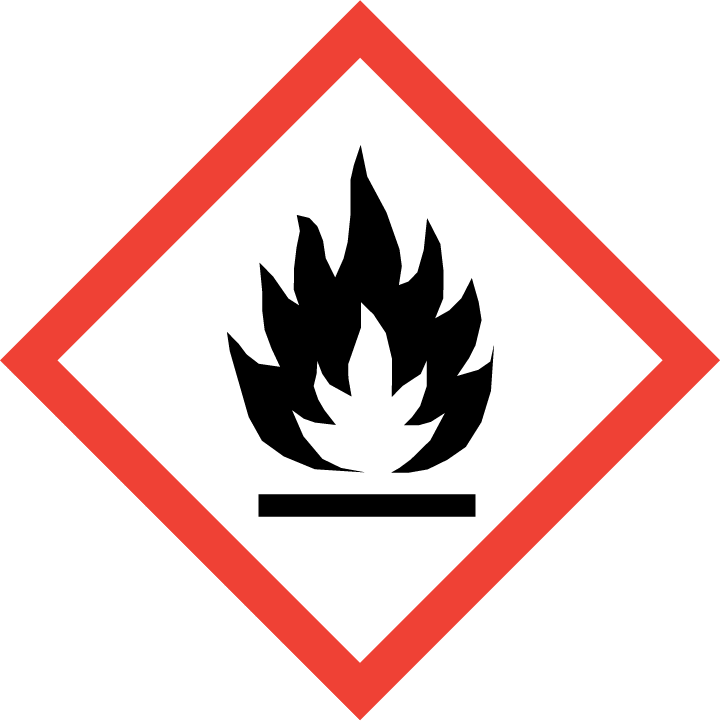  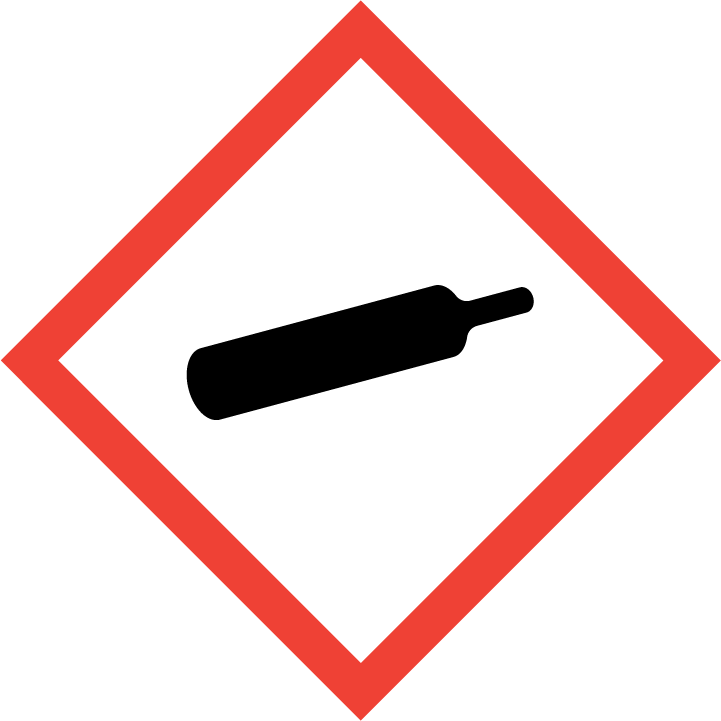 |
|---|---|
| Signal word | Danger |
| Hazard statement(s) | H220 Extremely flammable gas H351 Suspected of causing cancer H412 Harmful to aquatic life with long lasting effects |
| Precautionary statement(s) | |
| Prevention | P210 Keep away from heat, hot surfaces, sparks, open flames and other ignition sources. No smoking. P201 Obtain special instructions before use. P202 Do not handle until all safety precautions have been read and understood. P280 Wear protective gloves/protective clothing/eye protection/face protection. P273 Avoid release to the environment. |
| Response | P377 Leaking gas fire: Do not extinguish, unless leak can be stopped safely. P381 In case of leakage, eliminate all ignition sources. P308+P313 IF exposed or concerned: Get medical advice/ attention. |
| Storage | P410+P403 Protect from sunlight. Store in a well-ventilated place. P403 Store in a well-ventilated place. P405 Store locked up. |
| Disposal | P501 Dispose of contents/container to ... |
none
3.Composition/information on ingredients 3.1 Substances| Chemical name | Common names and synonyms | CAS number | EC number | Concentration |
|---|---|---|---|---|
| chloroethane | chloroethane | 75-00-3 | none | 100% |
Consult a physician. Show this safety data sheet to the doctor in attendance.
If inhaledFresh air, rest. Refer for medical attention.
In case of skin contactON FROSTBITE: rinse with plenty of water, do NOT remove clothes. Rinse skin with plenty of water or shower. Refer for medical attention .
In case of eye contactFirst rinse with plenty of water for several minutes (remove contact lenses if easily possible), then refer for medical attention.
If swallowedNever give anything by mouth to an unconscious person. Rinse mouth with water. Consult a physician.
4.2 Most important symptoms/effects, acute and delayedVapor causes drunkenness, anesthesia, possible lung injury. Liquid may cause frostbite on eyes and skin. (USCG, 1999)
4.3 Indication of immediate medical attention and special treatment needed, if necessaryIrrigate eyes with water. Wash contaminated areas of body with soap and water.
5.Fire-fighting measures 5.1 Extinguishing media Suitable extinguishing mediaWater fog, carbon dioxide, dry chemical. For large fire it is best to allow material to burn while cooling surrounding equipment. Stop flow of ethyl chloride.
5.2 Specific hazards arising from the chemicalSpecial Hazards of Combustion Products: Toxic and irritating gases are generated in fires. Behavior in Fire: Containers may explode. (USCG, 1999)
5.3 Special protective actions for fire-fightersWear self-contained breathing apparatus for firefighting if necessary.
6.Accidental release measures 6.1 Personal precautions, protective equipment and emergency proceduresUse personal protective equipment. Avoid dust formation. Avoid breathing vapours, mist or gas. Ensure adequate ventilation. Evacuate personnel to safe areas. Avoid breathing dust. For personal protection see section 8.
6.2 Environmental precautionsEvacuate danger area! Consult an expert! Personal protection: self-contained breathing apparatus. Ventilation. Do NOT let this chemical enter the environment.
6.3 Methods and materials for containment and cleaning upWaste water treatment: evaporation from water at 25°C of 1 ppm solution (still air, avg depth 6.5 cm), 50% after 21 min, 90% after 79 min
7.Handling and storage 7.1 Precautions for safe handlingAvoid contact with skin and eyes. Avoid formation of dust and aerosols. Avoid exposure - obtain special instructions before use.Provide appropriate exhaust ventilation at places where dust is formed. For precautions see section 2.2.
7.2 Conditions for safe storage, including any incompatibilitiesFireproof.MATERIALS WHICH ARE TOXIC AS STORED OR WHICH CAN DECOMPOSE INTO TOXIC COMPONENTS ... SHOULD BE STORED IN A COOL WELL VENTILATED PLACE, OUT OF THE DIRECT RAYS OF THE SUN, AWAY FROM AREAS OF HIGH FIRE HAZARD, AND SHOULD BE PERIODICALLY INSPECTED. INCOMPATIBLE MATERIALS SHOULD BE ISOLATED ...
8.Exposure controls/personal protection 8.1 Control parameters Occupational Exposure limit valuesHandle with caution in the work place.
NIOSH considers ethylene dichloride; hexachloroethane; 1,1,2,2-tetrachloroethane; and 1,1,2-trichloroethane; to be potential occupational carcinogens. Additionally, NIOSH recommends that the other five chloroethane compounds: 1,1-dichloroethane; ethyl chloride; methyl chloroform; pentachloroethane; and 1,1,1,2-tetrachloroethane be treated in the workplace with caution because of their structural similarity to the four chloroethanes shown to be carcinogenic in animals.
Biological limit valuesno data available
8.2 Appropriate engineering controlsHandle in accordance with good industrial hygiene and safety practice. Wash hands before breaks and at the end of workday.
8.3 Individual protection measures, such as personal protective equipment (PPE) Eye/face protectionSafety glasses with side-shields conforming to EN166. Use equipment for eye protection tested and approved under appropriate government standards such as NIOSH (US) or EN 166(EU).
Skin protectionWear impervious clothing. The type of protective equipment must be selected according to the concentration and amount of the dangerous substance at the specific workplace. Handle with gloves. Gloves must be inspected prior to use. Use proper glove removal technique(without touching glove's outer surface) to avoid skin contact with this product. Dispose of contaminated gloves after use in accordance with applicable laws and good laboratory practices. Wash and dry hands. The selected protective gloves have to satisfy the specifications of EU Directive 89/686/EEC and the standard EN 374 derived from it.
Respiratory protectionWear dust mask when handling large quantities.
Thermal hazardsno data available
9.Physical and chemical properties| Physical state | colourless gas |
|---|---|
| Colour | COLORLESS LIQUID |
| Odour | Ethereal odor |
| Melting point/ freezing point | -31°C(lit.) |
| Boiling point or initial boiling point and boiling range | 96°C/4mmHg(lit.) |
| Flammability | Flammable GasExtremely flammable. Gives off irritating or toxic fumes (or gases) in a fire. |
| Lower and upper explosion limit / flammability limit | Lower limit 3.8% - Upper limit 15.4% |
| Flash point | 41°C(lit.) |
| Auto-ignition temperature | 518.89°C (USCG, 1999) |
| Decomposition temperature | no data available |
| pH | no data available |
| Kinematic viscosity | 0.279 cP at 10°C |
| Solubility | 0.574 g/100 mL at 20°C |
| Partition coefficient n-octanol/water (log value) | log Kow= 1.43 |
| Vapour pressure | 32.29 psi ( 55 °C) |
| Density and/or relative density | 2.22(气) |
| Relative vapour density | 2.22 (vs air) |
| Particle characteristics | no data available |
no data available
10.2 Chemical stabilityAT LOW TEMP OR UNDER INCREASED PRESSURE, ETHYL CHLORIDE IS A MOBILE, VERY VOLATILE LIQUID.
10.3 Possibility of hazardous reactionsFLAMMABLE GAS AT ORDINARY TEMP AND PRESSURE.The gas is heavier than air and may travel along the ground; distant ignition possible.ETHYL CHLORIDE is heat sensitive. This compound will hydrolyze in the presence of alkalis and water. It reacts with water or steam to produce toxic and corrosive fumes. It can also react vigorously with oxidizing materials. The vapor forms highly flammable mixtures with air. A mixture of this compound with potassium is shock-sensitive. Contact with chemically active metals such as Na, K, Ca, powdered Al, Zn and Mg may result in violent reactions.
10.4 Conditions to avoidno data available
10.5 Incompatible materials... CAN REACT VIGOROUSLY WITH OXIDIZING MATERIALS.
10.6 Hazardous decomposition productsThermally stable to 400°C; thermal splitting yields ethylene and hydrogen chloride.
11.Toxicological information Acute toxicity- Oral: no data available
- Inhalation: LC50 Rat inhalation 152 mg/l/2 hr
- Dermal: no data available
no data available
Serious eye damage/irritationno data available
Respiratory or skin sensitizationno data available
Germ cell mutagenicityno data available
CarcinogenicityEvaluation: No epidemiological data relevant to the carcinogenicity of chloroethane. There is limited evidence in experimental animals for the carcinogenicity of chloroethane. Overall evaluation: Chloroethane is not classifiable as to its carcinogenicity to humans (Group 3).
Reproductive toxicityNo studies were located regarding reproductive or developmental effects following ethyl chloride inhalation exposure in humans. Several animal studies found no reproductive effects caused by ethyl chloride exposure. An animal study reported a decrease in uterine weights, while another study reported minimal evidence of fetotoxicity (increase in centers of unossified bones of the skull) from inhalation exposure to ethyl chloride.
STOT-single exposureno data available
STOT-repeated exposureno data available
Aspiration hazardno data available
12.Ecological information 12.1 Toxicity- Toxicity to fish: no data available
- Toxicity to daphnia and other aquatic invertebrates: no data available
- Toxicity to algae: no data available
- Toxicity to microorganisms: no data available
AEROBIC: Ethyl chloride, present at 1.84 and 4.19 mg/l, reached 1% of its theoretical BOD in 4 weeks using an activated sludge inoculum at 2 mg/l and the closed bottle test(1).
12.3 Bioaccumulative potentialFood chain concn potential: none
12.4 Mobility in soilUsing a structure estimation method based on molecular connectivity indices(1), the Koc for ethyl chloride can be estimated to be 24(SRC). According to a classification scheme(2), this estimated Koc value suggests that ethyl chloride is expected to have very high mobility in soil.
12.5 Other adverse effectsno data available
13.Disposal considerations 13.1 Disposal methods ProductThe material can be disposed of by removal to a licensed chemical destruction plant or by controlled incineration with flue gas scrubbing. Do not contaminate water, foodstuffs, feed or seed by storage or disposal. Do not discharge to sewer systems.
Contaminated packagingContainers can be triply rinsed (or equivalent) and offered for recycling or reconditioning. Alternatively, the packaging can be punctured to make it unusable for other purposes and then be disposed of in a sanitary landfill. Controlled incineration with flue gas scrubbing is possible for combustible packaging materials.
14.Transport information 14.1 UN Number| ADR/RID: UN1993 | IMDG: UN1993 | IATA: UN1993 |
| ADR/RID: FLAMMABLE LIQUID, N.O.S. |
| IMDG: FLAMMABLE LIQUID, N.O.S. |
| IATA: FLAMMABLE LIQUID, N.O.S. |
| ADR/RID: 3 | IMDG: 3 | IATA: 3 |
| ADR/RID: II | IMDG: II | IATA: II |
| ADR/RID: no | IMDG: no | IATA: no |
no data available
14.7 Transport in bulk according to Annex II of MARPOL 73/78 and the IBC Codeno data available
15.Regulatory information 15.1 Safety, health and environmental regulations specific for the product in question| Chemical name | Common names and synonyms | CAS number | EC number |
|---|---|---|---|
| chloroethane | chloroethane | 75-00-3 | none |
| European Inventory of Existing Commercial Chemical Substances (EINECS) | Listed. | ||
| EC Inventory | Listed. | ||
| United States Toxic Substances Control Act (TSCA) Inventory | Listed. | ||
| China Catalog of Hazardous chemicals 2015 | Listed. | ||
| New Zealand Inventory of Chemicals (NZIoC) | Listed. | ||
| Philippines Inventory of Chemicals and Chemical Substances (PICCS) | Listed. | ||
| Vietnam National Chemical Inventory | Not Listed. | ||
| Chinese Chemical Inventory of Existing Chemical Substances (China IECSC) | Listed. | ||
| Creation Date | Aug 12, 2017 |
|---|---|
| Revision Date | Aug 12, 2017 |
- CAS: Chemical Abstracts Service
- ADR: European Agreement concerning the International Carriage of Dangerous Goods by Road
- RID: Regulation concerning the International Carriage of Dangerous Goods by Rail
- IMDG: International Maritime Dangerous Goods
- IATA: International Air Transportation Association
- TWA: Time Weighted Average
- STEL: Short term exposure limit
- LC50: Lethal Concentration 50%
- LD50: Lethal Dose 50%
- EC50: Effective Concentration 50%
- IPCS - The International Chemical Safety Cards (ICSC), website: http://www.ilo.org/dyn/icsc/showcard.home
- HSDB - Hazardous Substances Data Bank, website: https://toxnet.nlm.nih.gov/newtoxnet/hsdb.htm
- IARC - International Agency for Research on Cancer, website: http://www.iarc.fr/
- eChemPortal - The Global Portal to Information on Chemical Substances by OECD, website: http://www.echemportal.org/echemportal/index?pageID=0&request_locale=en
- CAMEO Chemicals, website: http://cameochemicals.noaa.gov/search/simple
- ChemIDplus, website: http://chem.sis.nlm.nih.gov/chemidplus/chemidlite.jsp
- ERG - Emergency Response Guidebook by U.S. Department of Transportation, website: http://www.phmsa.dot.gov/hazmat/library/erg
- Germany GESTIS-database on hazard substance, website: http://www.dguv.de/ifa/gestis/gestis-stoffdatenbank/index-2.jsp
- ECHA - European Chemicals Agency, website: https://echa.europa.eu/






